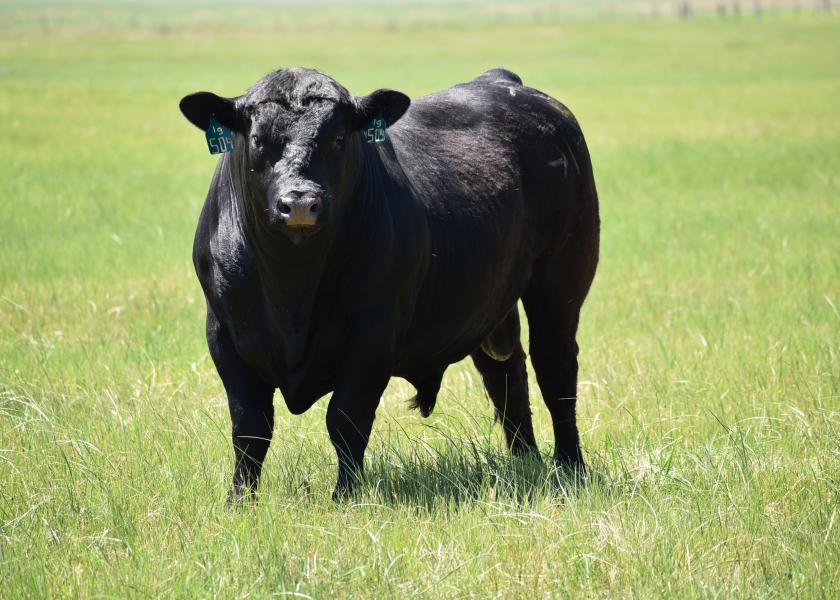Bulls in the Off-Season: Prepare Now for Breeding Season

This time of year, especially in a spring calving herd, the question, “What should I do with my bulls?” often comes to mind for cow-calf producers.
While bulls have done their job for the year and will not be needed again until next spring, there are several considerations to take into account when deciding where and how to keep bulls over the winter months.
Experts from Kansas State University’s Beef Cattle Institute share their advice on how to keep bulls ready for the next breeding season.
Health
When pulling cows and bulls off pasture in the fall, Bob Larson, DVM, professor of clinical sciences, suggests checking the herd for soundness and lameness—especially those herds who cover a lot of miles and may be on rough pasture.
Bulls are big heavy animals, an “offensive lineman type of thing,” says Larson, and one of the main reasons bulls are culled is due to feet and leg problems causing lameness.
As a “breeding athlete” for your herd, producers should complete a thorough exam of each bull by watching:
• Stride length—Is the bull taking short strides or walking stiff legged?
• Claws—Are the bull’s claws a little long or have swelling?
Lameness in both legs can be harder to identify, says Larson, but these bulls will likely move slower. By watching other bulls, these differences might be more obvious. Larson encourages producers to start at the feet, move up the leg and then watch their overall walk to find any soundness issues.
Nutrition
Bulls located in parts of the country with good forage will likely be coming off grass in good body condition.
However, especially in a drought year, it’s possible bulls are coming off pasture at a lesser body condition score (BCS) than usual, BCS of 5 or less, due to the lack of late summer forage. In this case, producers may need to consider energy supplementation to help get the bull back to breeding condition.
When forage quality is low, it’s important to make sure bulls receive the energy they need to service your operation in the following breeding season.
Management
When keeping bulls over winter, producers often have two approaches to where the bulls are kept—with the cows or by themselves.
Larson says, from a feed standpoint, cows and bulls have similar enough nutrition needs to be housed together, assuming they are in good body condition. However, he prefers to separate the bulls, giving them time to rest from any cows that may come open over winter. Additionally, Larson suggests bulls be protected from the weather, which might be easier to accomplish if separated.
However, Phillip Lancaster, research assistant professor of beef cattle nutrition, sees the benefit in housing cows and bulls together, allowing the cows to get rebred and be sold later as pregnant cows.
Lancaster adds, the decision is often situational—considering body condition, labor resources to feed another group of animals and what paddocks and pens are available. However, as cows lactate in late winter and early spring, they may need supplementation that will only make the bulls fat, so Lancaster suggests separating at this point.
For operations with multiple bulls, Larson encourages bulls be kept together throughout the winter, so they can establish the pecking order and dominance hierarchy prior to the breeding season. This also helps the bulls become comfortable with one another, and in the case something happens, it gives producers time to react accordingly.
Heading into the next several winter months, how will you keep your “breeding athletes” prepared for the season to come?
Read More:
Which Cows Are Worth Keeping? Select Cows That Best Fit Your Operation
Cattle Auction Preparations: A Sale Day Checklist for Ranchers







